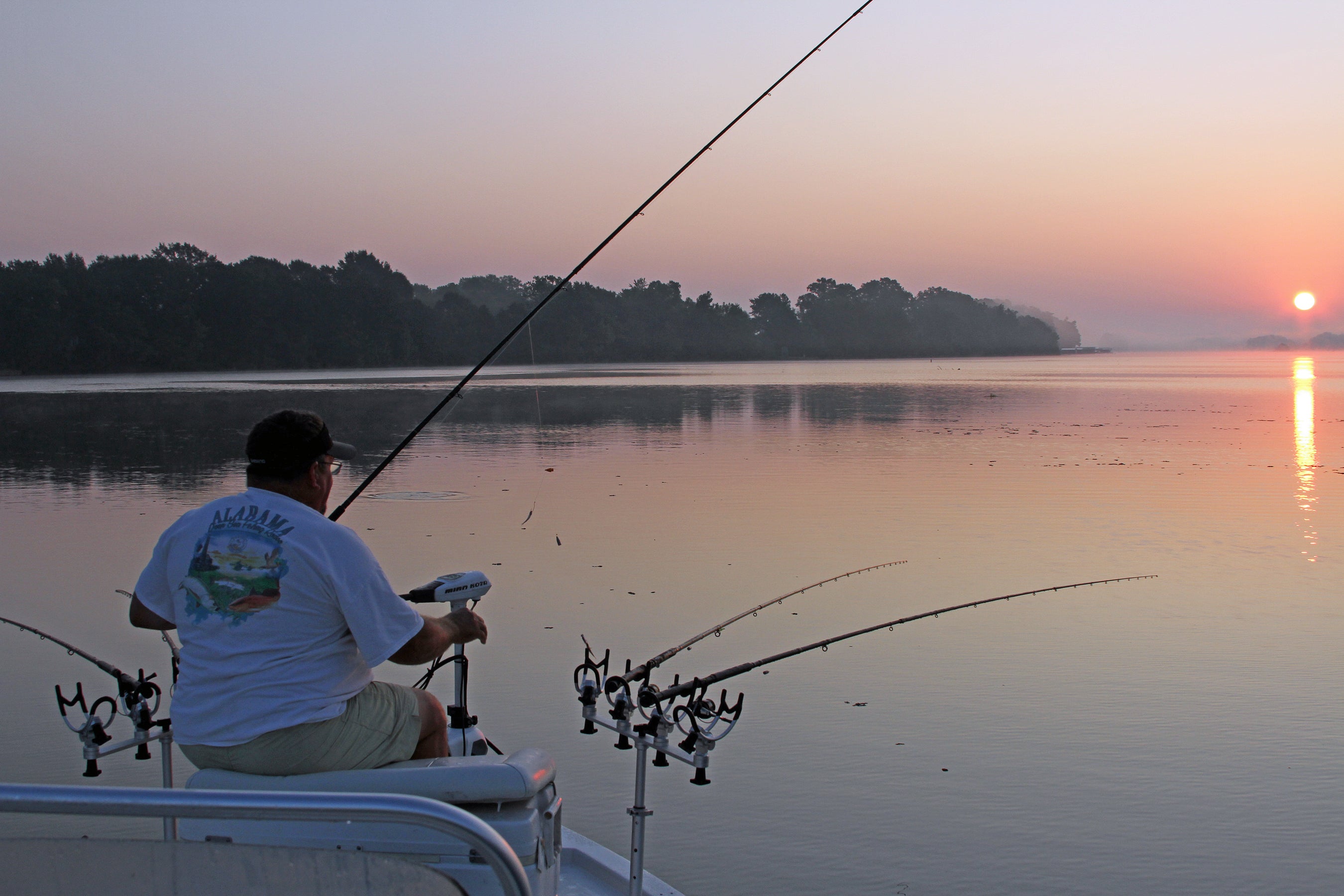By DAVID RAINER, Alabama Department of Conservation and Natural Resources
While perusing social media during this seemingly endless summer, I kept seeing photos of slab crappie that were coming from the Alabama River.
Wait, I thought those slabs were caught in the spring when the crappie are spawning or in the fall when the weather and water temperatures have considerably cooled.
Turns out, these anglers were taking advantage of the latest technology to defy the common theory that big crappie are hard to catch during the dog days of summer, which appear set to last into October this year.
I remember well the first Humminbird flasher my late father installed on his boat and how it helped him locate his favorite structure. It was a big deal way back then.
Considering we hold far more computer power in our hands when we are using our smartphones than the entire Apollo space program had during their trips to the moon, it shouldn’t be a surprise that the latest fish-finding technology could change the way anglers approach a day on the water.
When I asked Joe Allen Dunn how in the world they were catching those slab crappie, he responded, “You need to come see for yourself.”
That’s exactly what happened. While other anglers are using the Humminbird HELIX and Lowrance HDS, Dunn and Brent Crow, a bass-fishing guide and tournament angler on the Tennessee River, opted to go with the Garmin Panoptix with LiveScope.
When Dunn eased his boat into one of the many flats off the main Alabama River at Millers Ferry, I couldn’t imagine crappie of any size would be anywhere but deep water during this oppressive stretch of hot weather.
I was wrong, completely. Over went the trolling motor and Dunn began scanning for the structure that are typically crappie havens during cooler weather, or so I thought.
Rigged with 16-foot poles and spinning reels, we attached minnows to the double-hook rigs with either bare hooks, jigs with curly-tail plastic baits or Road Runner lures.
We dropped the bait about 8 feet down and started easing toward the structure as Dunn eyed the screen.
While I watched the rod tips on my side, Dunn watched the screen as we approached the structure.
Suddenly, a rod tip flexed and the hook was set on a nice crappie.
On the next approach, Dunn said, “You can even see your minnows, look here.” I looked at the screen and, sure enough, I could see the minnows dangling above the structure.
Then I saw something that I never expected. I saw a swirl in the structure and the fish came up and grabbed the bait. “Holy mackerel” was my response as I set the hook.
We started our venture at first light because of the heat and called it a day 4 hours later with 10 nice crappie in the livewell. About twice that many had been caught and released.
“We’ve been trolling for a long time,” Dunn said. “Everybody thinks the slough fish or shallow-water fish are gone or they don’t bite anymore. We proved today that the fish are still there, and they will bite. A lot of people don’t get in the sloughs this time of year and look for structure. Live bait is a big factor until it cools off.”
Dunn said before he was introduced to the new technology, the traditional way to catch crappie was to hit the deep river ledges, bouncing baits off the bottom when power production from the dam created current.
“It all revolved around when they were pulling water,” he said. “For river fish, you have to have that moving water. It keeps them tight to the wood, and you can do better.
“This new technology is not going to make fish magically appear in front of you. You’ve still got to work to find the fish. The down- and side-imaging helps you locate these fish. But you had to fish so hard to find them.
“Now, I can hit the GPS and mark it. I can drop a buoy and get the boat situated to face into the wind, and then you use the LiveScope to move back and forth on the structure. You don’t have to troll all over the place to find it. It keeps you from disturbing the fish. That’s the key to it. You can keep your bait in the strike zone all the time now.”
Dunn learned about the technology from James “Big Daddy” Lawler, who had been out on crappie guide Gerald Overstreet’s boat equipped with technology.
“I’ve been fishing for crappie for 32 years, and I’ve never seen anything like it,” Lawler said. “It’s totally changed the way I look at crappie fishing. I went into Pine Barren Creek and caught fish in 5 feet of water. I never would have believed that.”








